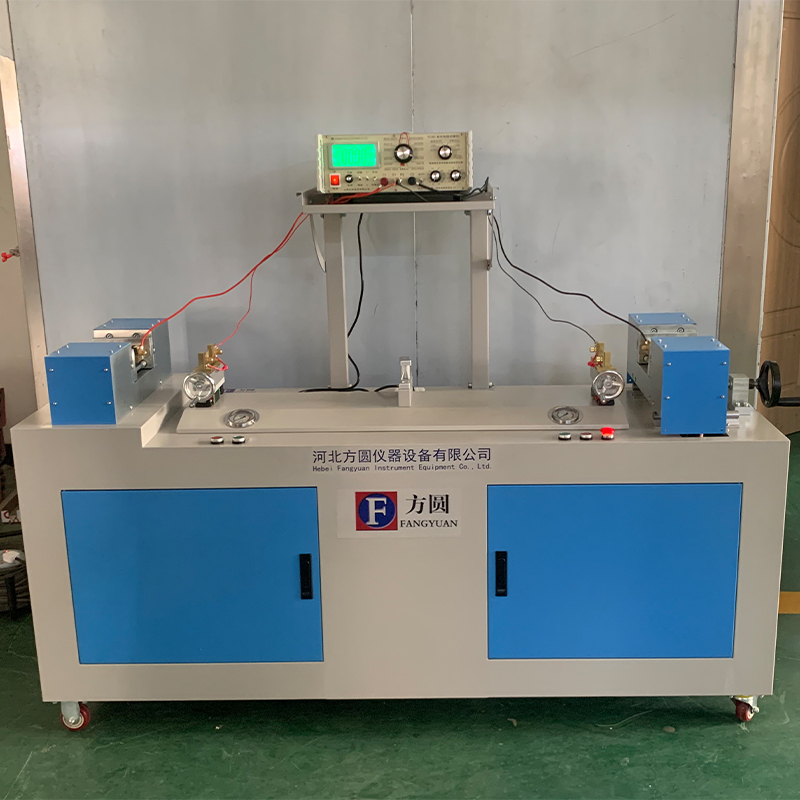Testing Manufacturer's Constant Temperature Conductor Resistance for Accurate Performance Evaluation
Understanding Conductor Resistance at Constant Temperature A Manufacturer’s Perspective
In the realm of electrical engineering, the importance of conducting materials cannot be overstated. The resistance of a conductor is a fundamental property that governs the efficiency and reliability of electrical systems. One crucial aspect of evaluating the performance of conductors is understanding their resistance at a constant temperature. This article explores the significance of this parameter from a manufacturer's perspective and highlights relevant methodologies and considerations.
The Importance of Conductor Resistance
Conductor resistance, usually denoted as R, is a measure of how strongly a material opposes the flow of electric current. It is influenced by several factors, including the material’s intrinsic properties, the physical dimensions of the conductor, and the temperature at which measurements are taken. For manufacturers, maintaining low resistance levels is critical for enhancing energy efficiency and ensuring the longevity of electrical systems.
Resistance is calculated using Ohm’s Law, which states that the resistance is equal to the voltage across the conductor divided by the current passing through it (R = V/I). However, resistance is not static; it can vary with temperature, which is where the significance of testing conductors at a constant temperature becomes evident.
The Role of Constant Temperature in Testing
For accurate assessments, manufacturers often perform resistance tests at a constant temperature. This is vital for several reasons
1. Consistency in Results Temperature can significantly affect resistance readings. Generally, resistance tends to increase with temperature due to the increased activity of atoms in the conductor. By conducting tests at a controlled, constant temperature, manufacturers can ensure that their results are consistent and reproducible.
2. Standardization Testing conductors at a constant temperature helps establish industry standards. Various organizations, including the Institute of Electrical and Electronics Engineers (IEEE) and the International Electrotechnical Commission (IEC), provide guidelines on how and when to measure conductor resistance. Adhering to these standards is crucial for manufacturers to ensure their products meet regulatory requirements and market expectations.
3. Material Comparison When manufacturers evaluate different materials for conductor designs, conducting resistance tests at a constant temperature allows for fair comparisons. Whether copper, aluminum, or other alloys, assessing resistance under the same thermal conditions helps identify the most suitable materials for specific applications.
conductor resistance constant temperature test manufacturer

Methodologies for Testing
Manufacturers typically employ several methodologies to measure conductor resistance at a constant temperature
1. Four-Wire Measurement This technique minimizes the impact of contact and lead resistances by using four distinct probes. Two probes supply current while the other two measure the voltage drop across the conductor. This method provides highly accurate resistance readings, crucial for quality assurance.
2. Wheatstone Bridge This classic circuit configuration allows for precise measurements of unknown resistances. By balancing the bridge, manufacturers can calculate the resistance of the conductor while ensuring thermal stability during measurement.
3. Temperature Control Systems Advanced manufacturers utilize temperature control systems to maintain a constant testing environment. This may involve climate-controlled chambers that stabilize temperature variations, which could potentially skew results.
Challenges and Considerations
While measuring conductor resistance at a constant temperature is pivotal, several challenges remain for manufacturers. External environmental factors, such as fluctuations in ambient temperature and humidity, can affect results. Implementing stringent quality control protocols is essential to mitigate these effects.
Moreover, as technology evolves, manufacturers must stay informed about the latest materials and their resistance properties. With the rise of smart materials and composites, understanding the resistance characteristics of these new conductors is crucial for future-proofing products.
Conclusion
In conclusion, the measurement of conductor resistance at constant temperature is an essential process for manufacturers in the electrical engineering sector. It ensures consistency, standardization, and accurate material comparisons. By employing precise methodologies and adapting to ongoing technological advances, manufacturers can optimize electrical conductivity and enhance the performance of their products, ultimately leading to safer and more efficient electrical systems. As the industry continues to evolve, maintaining a focus on resistance testing will undoubtedly remain a cornerstone of engineering excellence.
-
Why the Conductor Resistance Constant Temperature Measurement Machine Redefines Precision
NewsJun.20,2025
-
Reliable Testing Starts Here: Why the High Insulation Resistance Measuring Instrument Is a Must-Have
NewsJun.20,2025
-
Flexible Cable Flexing Test Equipment: The Precision Standard for Cable Durability and Performance Testing
NewsJun.20,2025
-
Digital Measurement Projector: Precision Visualization for Modern Manufacturing
NewsJun.20,2025
-
Computer Control Electronic Tensile Tester: Precision and Power for the Modern Metal Industry
NewsJun.20,2025
-
Cable Spark Tester: Your Ultimate Insulation Assurance for Wire and Cable Testing
NewsJun.20,2025
 Copyright © 2025 Hebei Fangyuan Instrument & Equipment Co.,Ltd. All Rights Reserved. Sitemap | Privacy Policy
Copyright © 2025 Hebei Fangyuan Instrument & Equipment Co.,Ltd. All Rights Reserved. Sitemap | Privacy Policy
